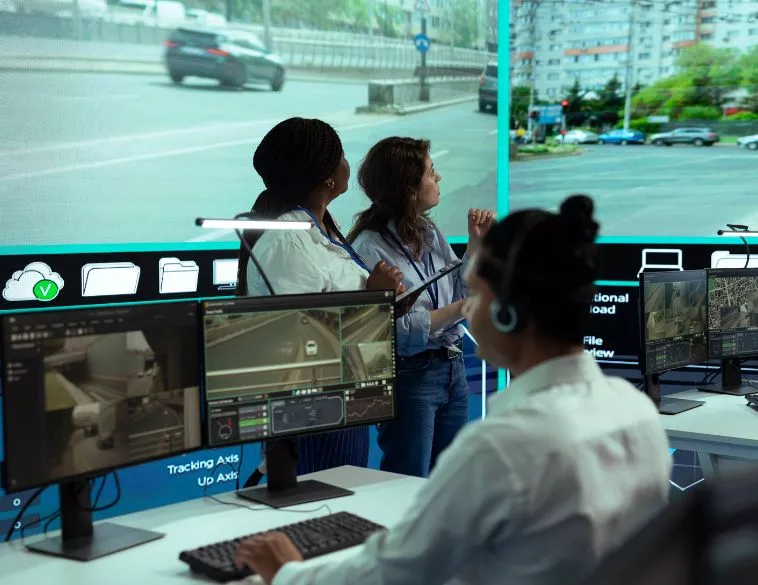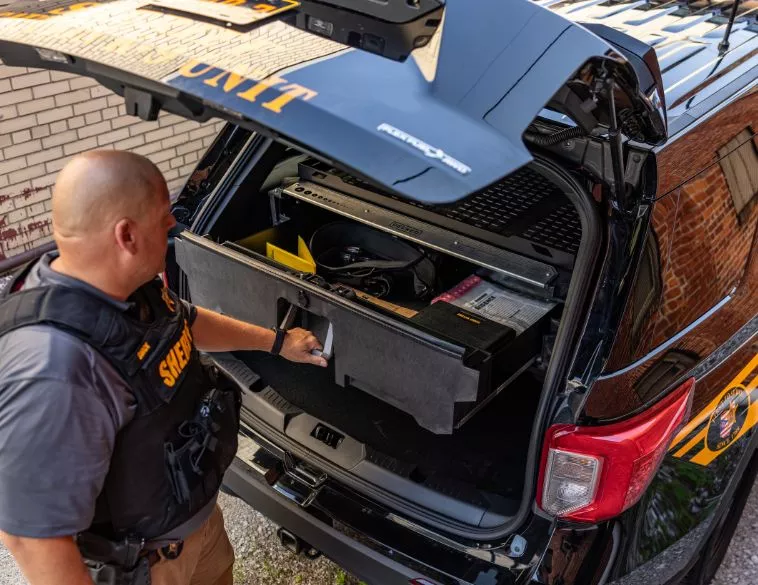Eye On The Good Guys
Properly implemented, telematics solutions can save lives.

While most fleet professionals appreciate the benefits of telematics, the technology is especially useful for those who manage emergency fleets, because it can provide them with mission-critical data that can literally save lives.
“Most emergency fleets now use telematics to track their vehicles,” says Guillaume Poudrier, President of Geothentic. “It’s widely recognized that during an active emergency response, it’s both necessary and beneficial—for coordination and safety reasons—for teams to have access to real-time location and telemetry data.”
Nathalie Crewes, Business Segment Manager at Geotab agrees. “Emergency fleets are increasingly using telematics, but it goes well beyond answering the question, ‘Where is my vehicle?’” she says. “While existing CAD systems offer ‘dot on the map’ tracking, the critical demand now centres on answering the questions, ‘What is my vehicle doing?’ and, ‘How is my vehicle doing?’”
For emergency vehicles—police, ambulance, and fire—24/7 readiness is paramount, Crewes adds. “Unexpected issues, like a check engine light during an emergency response, are unacceptable. Without detailed engine data and insights into vehicle usage, maintenance is often reactive and inefficient, relying on fixed schedules rather than actual wear and tear of the vehicle,” she says.
Crewes explains that telematics adoption is often driven by maintenance needs. “However,” she adds, “its utility quickly expands as public safety agencies discover how vehicle data can solve broader operational challenges.”
For example, Crewes says, “analyzing driving behaviour, both during an emergency response and routine patrols, provides crucial insights for driver coaching programs. This directly contributes to reducing collisions, minimizing injuries and enhancing the safety of emergency responders on the road.”
Furthermore, Crewes argues that telematics solutions are powerful tools that can help to significantly cut costs, and that the resulting savings can be reinvested into other critical operations, such as vehicle replacements or increasing personnel.
“Let’s look at fuel,” she says. “Fuel can be one of the largest expenditures for a fleet. A data-rich telematics solution can enable a multi-faceted plan to reduce fuel costs. Agencies can assess the suitability of electric vehicles based on the real-world usage patterns of their existing fleet, eliminating guesswork.”
Where EVs are not yet a viable option, simply reducing idling can yield substantial savings, Crewes says. “In fact we have seen that fleets use data to achieve up to a 40% reduction in idling, which translates into significant fuel savings. While police vehicles serve as mobile offices, prolonged idling near headquarters or stations is inefficient. Implementing custom rules to flag excessive idling provides opportunities in coaching drivers to adopt more efficient behaviours, directly leading to reduced fuel costs.”
Getting started
With a growing number of telematics solutions available on the market, it’s critical for a fleet manager to choose the right technology for their needs. “The ideal setup often depends on the available budget and how the collected data will be used,” explains Geothentic’s Poudrier. “Generally, best practices recommend equipping police vehicles and fire trucks with cameras, in addition to GPS tracking. Real-time access to this information allows remote teams to provide timely and informed support during interventions.”
In addition, the power of artificial intelligence (AI) can be harnesses for optimum results. “For emergency fleets, a comprehensive telematics system is essential for maximizing safety, efficiency and rapid response,” says Geotab’s Crewes. “These systems harness AI to turn data into actionable insights. Crucially, the platform needs open APIs for seamless integration with existing in-vehicle technology, ensuring no data gets trapped in silos.”
She stresses the importance of choosing telematics solutions based on operational goals like optimizing response times, enhancing safety, maximizing vehicle uptime, improving resource allocation and controlling costs.
“A robust telematics system includes near real time GPS tracking for precise location and AI-powered dynamic routing,” she adds. “Driving behaviour monitoring is essential, monitoring aspects like speeding, harsh braking, and idling to promote safer driving and reduce operational costs. AI-enabled camera systems—forward facing, driver-facing and 360 degree views—provide critical evidence, enhance training, and improve situational awareness.”
Crewes explains that predictive vehicle diagnostics and maintenance monitoring offer proactive alerts for engine faults and fuel consumption, “while emergency alerting and communication features like Automatic Crash Notification (ACN) and panic buttons are vital for immediate support, often enhanced by intelligent systems for quicker response.”
Telematics and transparency
Frank Daccardi, Manager, Telematics Solutions at Holman says that the need for efficiency and transparency is driving the adoption of telematics technologies. “Knowing that a vehicle is in an active engagement situation is key,” he says. “Knowing that a vehicle has turned on their lights or sirens, and then seeing where that vehicles is on a map, and which of your other vehicles are nearby is critical. If you need multiple units on the scene, you can have a more coordinate response.”
In addition to location and activity data, Daccardi notes that maintenance data is important, especially for emergency fleets, since many of these vehicles tend to idle quite a bit, which means that odometer readings aren’t always the best indicators of when a vehicle is due for a visit to the garage.
“A traditional fleet could have a bit of downtime, now and then, and the downside is inconvenience,” he adds. “But you can’t have a downtime event for emergency response vehicles, because now it’s not about inconvenience, but a potential loss of life. So the ability to maintain these vehicles and to make sure they are available to do the job, when they are called on, is critical.”
That’s why a dependable telematics solution is a must. “You want a solution you can trust, and one that performs when it’s needed,” Daccardi says. “And keep in mind that the data is very sensitive, so you’ll want to monitor who has access to it. Imagine, in a police setting, for example, you wouldn’t want everyone to have access to real-time location data on your vehicles.”
In order to avoid making mistakes when implementing new telematics solutions, Geothentic’s Poudrier recommends getting expert advice. “Fleets should work with a specialized solution provider—not just a generic telecom or reseller—who understands the specific needs of emergency services and can tailor the solution accordingly,” he says. “Partnering with someone who offers a step-by-step integration process, and long-term support, is key to success.”






